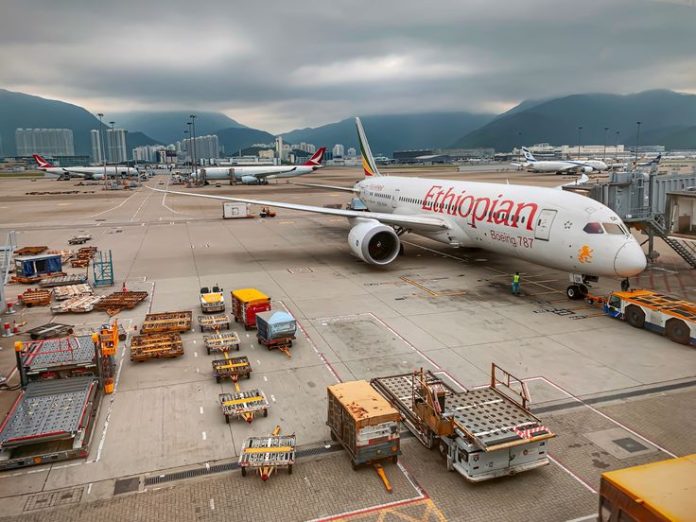Ethiopia has taken a bold leap in its aviation ambitions with the ceremonial signing that appoints the African Development Bank (AfDB) as the mandated lead arranger for financing what will become Africa’s largest airport. The Bishoftu International Airport, also known locally as the Abusera Airport, will be built some 40 kilometres southeast of Addis Ababa and is expected to transform not only Ethiopia’s connectivity to the world but also the continent’s integration with itself.
The agreement, signed at the Skylight Hotel in the Ethiopian capital, brings together some of the most influential figures in African infrastructure development. Ethiopian Finance Minister Ahmed Shide joined AfDB President Dr. Akinwumi Adesina to formalize the Bank’s leadership in raising as much as $8 billion in debt financing for the $10 billion mega-project. Ethiopian Airlines Group CEO Mesfin Tasew and AfDB Vice President Solomon Quaynor will put pen to paper on the operational documents that set the project in motion. AfDB has committed to anchor the fundraising effort with up to $500 million of its own, pending board approval.
Read also: AfDB strengthens push for Zambia’s private sector as a driver of sustainable transformation
Bishoftu International Airport is being conceived at a scale unprecedented in Africa’s aviation history. In its first phase, the hub will have the capacity to handle 60 million passengers a year, a figure that will expand to 100–110 million once fully built. That expansion, addresses urgent capacity constraints at Addis Ababa’s current Bole International Airport, which has already been stretched near its 22 million passenger design limit despite recent upgrades. Ethiopian Airlines, Africa’s largest and most consistently profitable carrier, sees Bishoftu as the centrepiece of its Vision 2040 strategy, cementing Addis Ababa’s status as a top-tier global transit point.
This project is also deeply embedded in Africa’s broader political and economic goals. It aligns with the African Union’s Agenda 2063 blueprint and the Single African Air Transport Market, both of which aim to open African skies, boost competition, lower fares, and enable smoother travel between African countries. If successfully delivered, Bishoftu will make it far easier for travellers and cargo to move across the continent without detouring through hubs in Europe or the Gulf, turning policy aspirations into physical reality.
Financing such a colossal undertaking requires a blend of public and private capital. AfDB’s role as mandated lead arranger is significant beyond the money it brings—it sends a signal to global investors that African-led development finance institutions can coordinate and de-risk billion-dollar infrastructure projects. This could become a model for other large-scale initiatives in sectors like renewable energy, rail, and seaports, where Africa’s infrastructure gap remains acute.
Read also: Cocoa overtakes crude oil in Nigeria–Belgium trade: A turning point for sustainable economic
The benefits of Bishoftu are not limited to passenger travel. Ethiopian Airlines is already a powerhouse in African air cargo, moving everything from fresh flowers and fruit to pharmaceuticals and industrial goods. The new airport’s design will accommodate both passenger and freight growth, integrating seamlessly with Ethiopia’s Modjo Dry Port and the Addis Ababa–Djibouti railway. For a landlocked nation whose trade lifeline runs through Djibouti, a state-of-the-art cargo hub will shorten supply chains, improve export reliability, and create new opportunities for value-added industries.
Such a mega-project comes with risks and responsibilities. The site is close to the Bishoftu crater lakes, a fragile ecological area, meaning environmental and social safeguards will be critical from day one. AfDB’s updated Integrated Safeguards System, introduced in 2024, will guide how contractors handle land acquisition, biodiversity protection, waste management, noise control, and community engagement. The way this project balances development with environmental stewardship will set an important precedent for future African infrastructure ventures near sensitive ecosystems.
There are also economic realities to navigate. Ethiopia is still recovering from a sovereign debt default in 2023 and is operating under an IMF Extended Credit Facility program. Securing $8 billion in mostly foreign-currency debt requires careful structuring to avoid overexposure to exchange-rate and interest-rate risks. Maintaining transparency in procurement and delivery will be vital to sustaining both domestic support and investor confidence, especially as the country works through economic reforms.
If Ethiopia and AfDB succeed, Bishoftu International Airport will be more than an engineering triumph. It will stand as proof that Africa can finance, build, and operate infrastructure at a world-class scale, led by its own institutions and aligned with its own integration agendas. It will be a logistics catalyst for trade under the African Continental Free Trade Area, a skills incubator for the continent’s next generation of aviation and engineering professionals, and a tangible expression of what an interconnected, forward-looking Africa can achieve.
Read also: CDP report finds climate action delivers 7x Returns with Africa positioned for the largest upside






